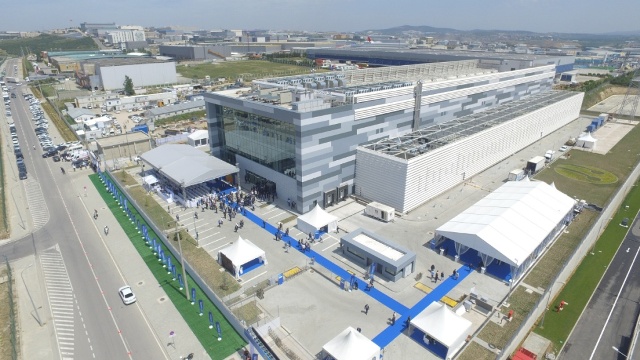
Though datacenters are supporting the rapid growth of mobile data business of telecom network operators, investment in datacenters is not the top priority for telecoms.
Some Indian telecoms are not convinced to make investment in tier IV data centers to support their data growth. Indian and US-based telecom operators do not even reveal their specific Capex towards data center facilities.
The following examples show that telecom network operators are going to rely on data boom for their additional revenues.
Vodafone CEO Vittorio Colao says data volumes grew 63 percent in June quarter 2016 supported by 4G adoptions with 4G base more than doubling to 53 million customers.
AT&T CEO Randall Stephenson said the company’s mobile data traffic growth was 150,000 percent during 2007–2015. AT&T expects 10x traffic growth by 2020.
Ericsson Mobility Report says global mobile data traffic is forecast to grow 10-fold by 2021, and video will account for 70 percent of total mobile traffic. YouTube accounts for up to 70 percent of all video traffic, while Netflix’s share of video traffic can reach as high as 20 percent in markets where it is available.
Intel, Mobileye and BMW will develop solutions for automated driving that will become a reality by 2021. BMW said its iNEXT model will be the foundation for launching autonomous vehicles that can use on highways and urban environments. Several Intel initiative will bolster investments in IoT.
Datacenters for telecoms
With IoT, cloud and mobile technologies progressing by the minute, the demand for datacenters is going up as it is responsible for both processing and hosting network and infrastructure related information.
With conventional networks becoming increasingly complex and operationally difficult, along-with agility issues and huge deployment time lengths, it is difficult to meet growing bandwidth demands on these networks. This has paved the way for datacenter technologies like Cloud, Software Defined Networking (SDN) and Network Function Virtualization (NFV).
Groups like Verizon, which has recently introduced a number of network features via SDN software, and AT&T, which has launched similar services in 76 countries, expanding on some virtualized functions since 2015, are promoting the use of such technologies.
Most of the software functions are licensed from leading hardware makers like Cisco Systems, Fortinet and Juniper Networks. Verizon also announced Virtual Network Services that will enable enterprises to transition to a virtual infrastructure model working on SDN and NFV technologies, recently.
Also, Google recently revealed that it is using technology from the DeepMind artificial intelligence subsidiary for cutting down on the power consumed by its datacenters. Google acquired Deepmind in 2014 for 400 million, as an investment in enhancing its datacenter sector.
Indian data center market
Gartner had earlier predicted that the value of the Indian datacenter infrastructure market will show a 5.2 percent increase to $2 billion in 2016, with the Indian storage market touching $307 million at the same time.
Amazon, which has one million active customers globally, launched its first set of India datacenter in Mumbai to offer cloud computing services, last month.
Datacenter sector figures
In the datacenter sector, adopting cloud technologies is critical, owing to the unpredictable and non-uniform sizes in use at various sectors of the industry. An ideal cloud infrastructure should be robust, possessing the flexibility and agility to scale and adapt as per requirement.
IDC reported recently that the current digital transformation will drive connectivity levels 50 percent higher across all industrial sectors by the end of this year.
Gartner reported this week that cloud computing will be one of the “most disruptive forces of IT spending since the early days of the digital age.”The aggregate amount of cloud shift will touch $111 billion, expanding up to $216 billion in 2020.
The research firm forecasts more than $1 trillion investment directly or indirectly in the shift to cloud over the next five years.
Also, public cloud providers will increase the investment in datacenter hardware such as servers, storage, and Ethernet switches while cutting down spending on IT gear for on-premise enterprise data centers, as per latest data from IDC.
IT infrastructure will partake in 60 percent of all end-user hardware investment in 2016, and public cloud providers will add to annual data center hardware investment by 19 percent on $23.3 billion worth of equipment.
Also, investment in hardware to build on-premise private clouds will increase by 10 percent this year, reaching $13.8 billion, adds IDC.
IDC has also predicted a 19 percent and a 10 percent upsurge in public and private cloud hardware respectively, owing to the need to meet demands for data center capacity.
Also, investments are being made on technologies like Software Defined Networking (SDN) and Network Function Virtualization (NFV) to cut down on the hardware usage and power consumption.
“Customers target high business growth areas to make strategic investments, but at the same time, they face budget restraints,” said TBR’s Krista Macomber, senior analyst, data center. “Server, storage and networking vendors are evolving long-standing portfolio and alliance models to capture shifting and increasingly narrow hardware revenue and profit opportunities by addressing customer demand for more agile and efficient IT.”
Meanwhile in UK, major European datacenter markets may face competition from Frankfurt, Amsterdam, or Dublin, as a result of Brexit. The main providers of UK include Equinix and CyrusOne with 17-percent and 22-percent rise in markets, respectively, as per reports from Rozwadowski.
Vodafone CEO says customer experience program has become the company’s core marketing strategy for branded service differentiation supported by Project Spring investment.
Telecom network operators do not reveal their datacenter related investment strategy. But they need to invest more in data centers to improve customer experience from the consumption of mobile data.
Vina Krishnan
[email protected]





